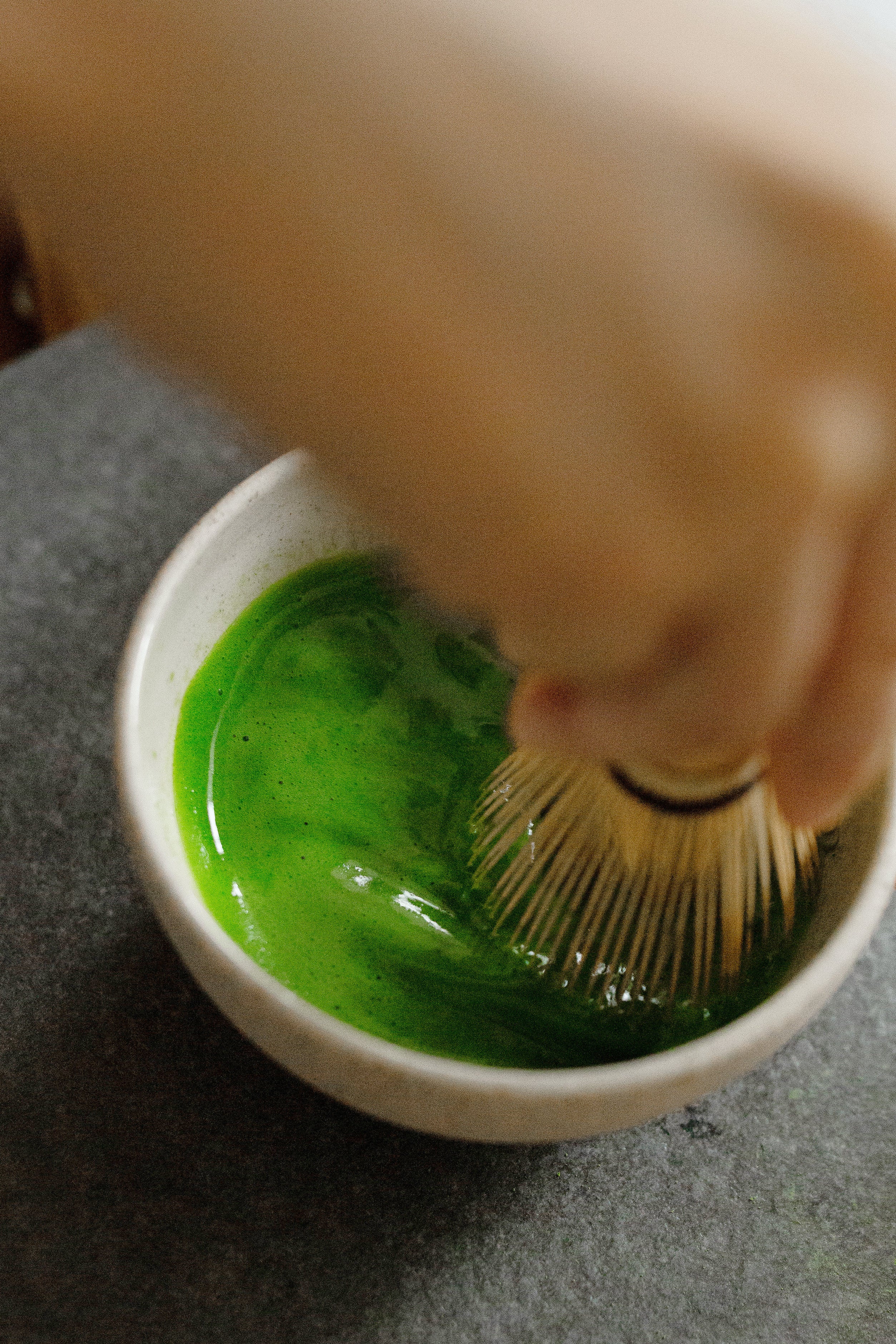Introducing
What is Matcha?
Matcha is a finely ground powdered green tea made from specially grown and processed tea leaves. Prepared by whisking the powder with hot water using a traditional chasen (bamboo whisk), it is known for its fragrant aroma, vibrant green colour, and umami-rich flavour.
Matcha is unique among Japanese teas because the entire tea leaf is consumed, making the quality of the leaves directly connected to the overall experience. Additionally, matcha is praised for its numerous health benefits, including high antioxidant content, metabolism-boosting properties, and the ability to enhance focus and calm.
How is matcha different from green tea?
Matcha and green tea both originate from the Camellia sinensis plant but undergo distinct cultivation, processing, and preparation methods. Matcha requires a prolonged shading period before harvest to enhance chlorophyll and amino acids, resulting in its vibrant green hue and rich flavour. After harvesting, the leaves are steamed, dried, deveined, and ground into a fine powder using either machine mills or traditional stone mills. Unlike other Japanese teas, matcha involves consuming the entire leaf, ensuring that higher concentrations of antioxidants, vitamins, minerals, and other nutrients are not lost through brewing but consumed directly. It is also known for its energising properties due to its caffeine and L-theanine contents.
What are the health benefits of matcha?
- High antioxidant content supports overall well-being by combating oxidative stress.
- Rich in catechins, including EGCG, which may contribute to maintaining heart health.
- Contains L-theanine, known for its calming effects that can help reduce stress.
- Supports metabolism and may assist in maintaining a healthy weight as part of a balanced diet.
- Provides sustained energy without the abrupt crash often associated with caffeine.
- Supports natural detoxification processes in the body.
- Enhances cognitive function, potentially improving focus and alertness.
- Contributes to overall immune system support with its nutrient profile.
How can you tell if matcha is high quality?
Determining the quality of matcha involves several key characteristics:
- Colour: Firstly, high-quality matcha exhibits a vibrant green colour, which results from an effective shading process before harvest. Various methods and durations of shading contribute to the overall quality of matcha, showcasing the producer's expertise.
- Texture: Its texture should be finely ground and smooth, ensuring a silky consistency on the tongue.
- Aroma: Aroma is another crucial factor; top-grade matcha carries a sweet fragrance with a fresh, grassy scent.
- Taste: When tasted, high-quality matcha offers a well-balanced umami flavour, often described as creamy and vegetal, with minimal bitterness. The complexity of taste can vary based on the resting duration as well.
- Packaging: Packaging is important too; quality matcha is typically stored in airtight containers or packaging in relatively small quantities to maintain freshness and protect it from light and air exposure, ensuring optimal flavour and nutritional benefits.
Is matcha safe to drink every day?
Of course you can! Matcha is generally safe to drink every day in moderation. It contains caffeine and should be consumed mindfully, especially for those sensitive to caffeine or with certain health conditions. However, matcha also offers numerous health benefits due to its high antioxidant content and can be a part of a balanced diet when enjoyed responsibly.
Recipes

— 抹茶ラテ
Matcha Latte
- Matcha: 2-3g
- Cold water: approx 10ml (enough to make a paste)
- Hot water: 80-90°C, approx 20ml
- Steamed milk of your choice: 170ml (adjust to your liking)
---
- Sift the matcha into a bowl
- Mix in the cold water and use a chasen (bamboo whisk) to make a thick paste.*Make sure there are no clumps in the paste.
- Pour the hot water into the bowl and whisk vigorously until matcha is fully dispersed.
- Pour the steamed milk (or warm milk if you don’t have a steamer) into your matcha mix. Our favourite is oat milk!
* For an iced matcha latte, pour the matcha mix into a glass of cold milk, ideally with lots of ice. - Enjoy!
— 薄茶
Usucha
Usucha is a straight matcha. It is like a drip coffee and is often prepared at Japanese tea ceremonies. Though traditionally it is prepared with approximately 60ml of water, if you’d like a milder taste, feel free to add more. Be creative with it :)
---
- Matcha: 2g
- Cold water: approx 10ml (enough to make a paste)
- Hot water: 80-90°C, approx 60ml
- Additional hot water*: 0-50ml
*Optional: If you prefer a milder flavour, adjust with extra water to find your perfect balance.
---
- Sift the matcha into a bowl
- Mix in the cold water and use a chasen (bamboo whisk) to make a thick paste.*Make sure there are no clumps in the paste.
- Pour the hot water into the bowl and whisk vigorously until matcha is fully dispersed.
- Add extra hot water to your liking.
- Enjoy!





















